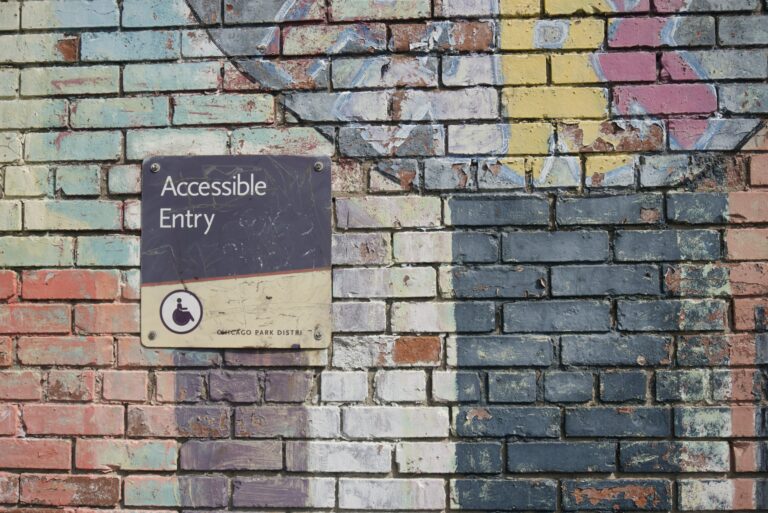Digital Detox #5: Questions to Ask Before Giving Up
I’m borrowing the title from a marvellous poem — linked again in context down below — by Kaitlyn Boulding. It’s wonderful to share with students at difficult moments in the semester.
To peel back the lid of the sardine can, what we’ve been engaging in this month, so far as we have been talking primarily about education, is critical pedagogy. Critical pedagogy, if you’re new to the lingo, applies critical theory — the school of thought that challenges power structures in society — to educational contexts. In other words, when we engage in critical pedagogy, we ask questions about who holds power and who benefits from the structures we work within, and we work towards a dismantling of those structures of power. A crucial thinker in the development of critical pedagogy is Paolo Friere, whose Pedagogy of the Oppressed conceived of a radical revisioning of education where knowledge is co-created among teachers and students. Another important thinker of this perspective is bell hooks, whose Teaching to Transgress and Teaching Community: A Pedagogy of Hope expand on how affective experiences of education and community matter deeply to learning.
Even if you’re not a teacher or a student, and even if your engagement with systems of education is pretty tangential, if you’re interested in this Digital Detox project, I’m pretty confident that you have some questions about power and how it functions. Critical pedagogy applies that concept to education, but the tools I’m going to discuss here are, I think, broadly applicable to any engagement with technology.
As I mentioned off the top of this project, in recent weeks I have been inspired by my reading of a slim volume called Manifesto for a Post-Critical Pedagogy (in the spirit of openness, the whole thing is freely available online). This builds on the works linked above, and asks us to think not just about what needs to be dismantled in education as we understand it today, but also what is worth holding onto. What is it that we are defending? What matters to us? And is it ultimately more nourishing and sustainable to centre that work, rather than to centre our anger and frustration? It’s a very hopeful lens.
Critical digital pedagogy — and an analogue I just this second made up, post-critical digital pedagogy — seeks to apply these same ideas to the digital teaching space. Critical digital pedagogy is an essential tool for thinking about issues like ethics, access, and inclusion, because it centres the question of power. And post-critical digital pedagogy, in so far as you and I are going to imagine it into being together today, is likewise essential because it centres hope. I like to take together these two ways of thinking, because real change comes from both identifying the problem and protecting the good in the search for a solution. It is, as we’ve talked about this month, easy to get mired in the muck, and that’s a really demoralizing place to be. We need to hold on to what we’re working towards.
When we look at the tools available to us and think about issues of accessibility, data privacy, and equity, we’re engaging in the work of critical digital pedagogy; when we think through the benefits of a tool and its potential to improve student learning, we’re engaging in a post-critical digital pedagogy. Today, I want to think about being extremely intentional in how we ask these kinds of questions and make these kinds of choices when one of these tools is presented to us.
Let’s Put the Education Back in Educational Technologies
As I alluded to at the end of last week, I think a lot about how educational technologies are pitched as technologies first and educational tools second. There are a lot of monied interests at play in the for-profit EdTech space, and they benefit less from critical analysis of consequences and more from the excitement generated by newer, shinier technological options. But this is why it’s so important that teachers be in the driving seat when new tools are tested and adopted, to keep the focus where it belongs: on the learning experiences of students.
It’s also why the casualization of higher education matters a great deal, and why it helps everyone if we collectively resist increased class sizes and course loads. As came up in the comments on last day’s post, there’s no doubt that the combined factors of precarity and overwork combine to make faculty vulnerable to labour-saving tools that trade in poor data security practices. And administrative decisions fuelled by a push towards so-called efficiency and not education are likewise supporting the growth of the kinds of tools and resources we have been talking about.
I think sometimes a lot of us who work in EdTech, especially those of us who spend a lot of time worried about the ethics of the big players in this field, can sound like real Debbie Downers. We take this fun, exciting, shiny thing and we add our doom and gloom; we are unwelcome party guests. Part of that is because for-profit EdTech has sales reps and swag and over-the-top promises, and we have Twitter accounts and blogs and cautionary tales. We can be so invested in trying to be heard that we sometimes seem like people who don’t like technology much at all.
But of course, that’s not the case — most of us are wildly passionate about what technology can do to enhance student learning, and we’re anxious about losing the educational piece in all the noise. What I want to do today is start to think about a way forward from here. I know I won’t fix the precarity of the academy or the late-capitalist drive to build an ever more efficient university, but what I hope to do with today’s missive is to give you a kind of toolkit so that you can feel empowered in your approach. And it puts education first.
Questions to Ask Before Giving Up
I’ve borrowed the title of this post from a wonderful poem because I think its approach to gentleness and care is actually a really fitting way to approach my little toolkit. I wish I had something fancier to show you here, but the toolkit is really just two questions I think we should ask before we adopt any technology, either for classroom use on an individual level or for wide scale adoption within and beyond an institution. They are questions that centre the two key concepts of critical pedagogy and post-critical pedagogy — questioning power and protecting what works — but are also intuitively important to ask:
What does this tool improve or enhance?
and
Who is profiting from this tool, and how?
In so far as we can use money as an analogue for power, the second question tries to kickstart a critique of the tool, and the first question allows us to make a comparison of value. If the gains are good and the costs are limited, we have a reason to proceed with learning more about the tool in question.
I admit, they sounds really basic. They are really basic. Indeed, they are so basic that they should be asked of every digital tool we encounter in our daily lives, from Facebook to online banking to putting a dashcam in your car. At the core, I’m asking you to do a cost-benefit analysis. And yet, I think intentionally considering these two factors, especially before asking students to bear additional costs, is critical — and I don’t think it happens enough, even outside of digital context. (How many $100+ textbooks were you assigned in your academic career where the instructor only used a tiny slice of the book in class, only to find out at the end of the term that there was a new edition coming out and the bookstore wouldn’t buy it back? I had dozens such books by the end of my schooling, and I really wish more of my instructors had asked those two questions before assigning their texts.)
I do think a sea change has come, though, in terms of instructor interest in these topics. It wasn’t so long ago when my own professors (and my colleagues, at the start of my working life) seemed not to know or care about the costs students incur. I think that’s changing as student unions become more activist on these issues and faculty complements shift to include more people who have been on the margins. The rise of open educational resources has largely come from a greater awareness of the financial struggles our students undertake.
And where there’s a clear price tag — this homework system costs $135 to my students, but I’m really impressed with the assignment design and the question banks, and I have five large classes to teach that will be streamlined by asking students to invest in this tool — this math seems easy to do. You can decide, and instructors always have, whether that tool is worth that cost, and different instructors will reach different conclusions about the value. It has always been a bit of a flawed system — can the person who isn’t bearing that cost really make the assessment of its value? — but it is what it is.
The problem, of course, and what I hope we’ve started to illuminate with these Digital Detox posts, is that the costs aren’t always financial, which is why we have a responsibility to understand how these tools make their money. When we see the involvement of venture capitalists and Silicon Valley financiers in the EdTech space, we need to ask where they see the profitability, and whether or not the business model involves the buying and selling of student data. So yes, the homework system might cost $135. But once I integrate it into my learning management system, what information has it learned about my students? What is it doing with the learning data it generates? Can my students opt out of data collection? Can I do so on their behalf? All of these questions get at a broader sense of “cost” and who bears it. Until we get answers to those questions, we can’t really take a position on value.
The other problem, of course, is assessing the education piece, and trying not to conflate it with efficiencies in our own labour. There’s a larger conversation to be had here, certainly, but there’s a different ethic in asking students to adopt an added cost because it will improve their learning in a meaningful way versus asking students to adopt an added cost because it will save labour or allow the institution to further casualize instructional staff.
A good, well-designed, and ethical tool can stand up to these questions. If student data isn’t being commodified, if upfront costs are reasonable, and if learning is genuinely improved, we can and should welcome new technologies into our classroom. And we should be prepared to involve students as stakeholders in the decision process, because they ultimately have to make the final call on whether an added cost is worth it.
What About When We Don’t Know?
The truth is that a lot of these tools, especially those produced by for-profit companies who want to sell you something, are not especially forthcoming about how they handle student data or what the future implications of their business model might be. If a company wants your student data because they’re building a database for a inevitably biased machine-learning grading AI that will eventually put you out of a job, they’re probably not going to say so in the same pitch meeting where they give you the cool highlighters and notepads. It’s almost always clear what the tool hopes to enhance (though proof of that is sometimes missing), but the costs are rarely so straightforward.
In the coming posts, we’re going to build on this toolkit and these basic questions by thinking about two ways to respond when we can’t get a clear picture or we don’t like the answers we do uncover: radical resistance and radical openness.
In the meantime, here are today’s prompts:
- Are you feeling brave enough to apply the toolkit to a technology in your life, and then to share your findings with us?
- How can we ensure we’re hearing student voices when we weigh the costs of learning technologies?
- Is there a tool you use everyday that you would like more clarity on the costs of using?







Thank you again, Brenna, those are two great questions. This post resonates with a lot of stimulating ideas I’ve seen recently, for example from Audrey Watters (like when she asked why does everyone think a critic of EdTech is anti EdTech but no one thinks a restaurant critic is anti restaurant food).
[ I deleted the rest of this comment. Sometimes it’s useful to write your thoughts but not wise to publish them. You’re doing a great job at making me think.]
I’ll not pretend I’m not wildly curious.
The cost benefit analysis is a very interesting idea in this realm. I recently read an article about how one of the best ways we could improve education was just to have filtered air in schools as, apparently, there was a (unsurprisingly) strong measurable correlation between healthy air and intelligence… who would have thought that healthy environments promote learning??? How many air filters, could one the money for one iPad buy? This story suggest one $700 air filter is like cutting a class size by a third – https://www.vox.com/2020/1/8/21051869/indoor-air-pollution-student-achievement
Utilitarian philosophies can be fraught with ethical dilemmas, but I wonder what the scope should be when we think of the greatest good for the technologies that we invest in? Tech tools like GoFundMe might seem like good entities for giving money to people that seem to need it, but should one fundraiser get more money because it goes viral? How do we maximize our resources for the best good? Hmm…
I deeply believe that every GoFundMe is a policy failure, honestly. I’m looking at the front page of the Canadian site and all the top fundraisers are for health care needs, grief support, and underfunded classrooms. I thought this was why we had a society.
The air filter story blows my mind, and also makes me think about underfunded school districts and how much potential is lost to lack of attention to just such environmental factors.
I recall with clarity how two particular instructors of mine used inexpensive books: one a $15 pocket book (Darrell Huff’s “How to Lie With Statistics”), and the other an even less expensive book (“Clear and Coherent Prose” by William Vande Kopple) that she opted to use for two! whole! semesters, – both of which I’ve kept on my shelf since the mid nineties – and how stunning it was to me i didn’t have to buy a $100 paperweight. I could not name a single other textbook I used over my other years of schooling but you can bet those books stand out for me, not just for their content, but also for their inherent accessibility.
Today I think a lot about the speed at which things change and reflect that on how my child is learning both academicially and socially. Break neck speeds. I wonder if we had more time to consider if we would more critically analyze what we are being asked to give up with a shiny EdTech tool is presented.
Gotta love a cheap and reliable textbook. For me it was A Short Guide to Writing About Literature. I got a used copy for about $18 and kept it darned near forever — it didn’t make the last move, since I’m *breathes* not in fact a literature prof anymore.
Time! We do need more time. Time for critical consideration. We don’t consider it enough in the drive toward efficiency.